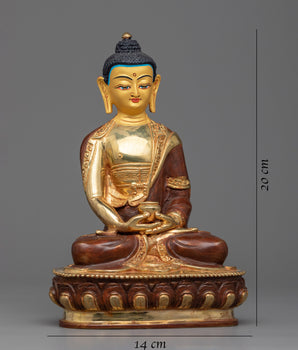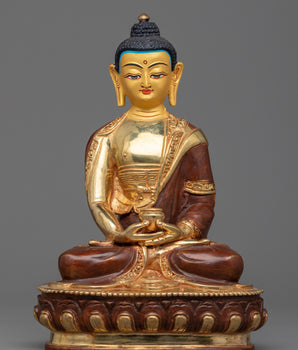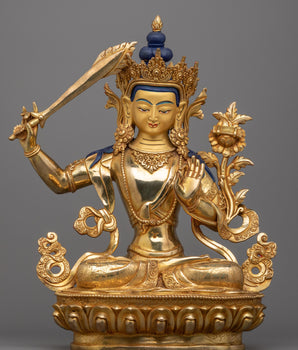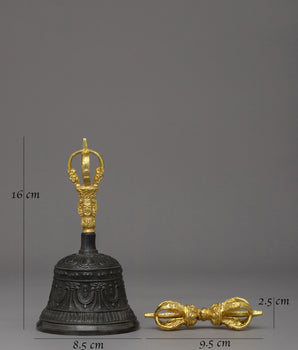









Guru Rinpoche Idol | Sacred Legacy | Nepalese Craftsmenships

100% AUTHENTIC

HANDMADE

FREE SHIPPING
The Precious Master: Guru Rinpoche Idol for Spiritual Blessings
-----------------------------------------------------------------
Size: 6.6"/17cm (Height) x 4.3"/11cm (Base)
Weight: 0.75 kg
Material: 24K Gold Gilded, Gold & Acrylic Paintings, Copper Body
-----------------------------------------------------------------
About Our Statue:
Let me introduce you to the Guru Rinpoche Idol, a small yet incredibly spiritual statue of Padmasambhava, often known as Guru Rinpoche, the renowned Buddhist teacher who taught Buddhism to Tibet. This idol, which stands 6.6 inches tall with a 4.3-inch base and weighs 0.75 kg, is created in homage to Guru Rinpoche's wisdom and transformational power. With its intricate gold and acrylic paintings, intricate 24K gold plating, and copper body construction, this artwork perfectly embodies Guru Rinpoche's awakened essence.
Despite its modest size, this Guru Rinpoche Idol embodies the same spiritual magnitude as larger representations, featuring the revered master in his iconic pose, holding the vajra and a skull cup, symbolizing his mastery over the esoteric teachings of Vajrayana Buddhism. The 24K gold gilding highlights the divine nature of Guru Rinpoche. At the same time, the intricate details and vibrant colors of the acrylic paintings bring to life his compassionate gaze and the symbolic attributes of his enlightened activity.
In Tibetan Buddhism, Guru Rinpoche, also known as Padmasambhava, is revered as the "Second Buddha," having brought Buddhism to Tibet in the eighth century. All schools of Tibetan Buddhism hold his life and teachings in high regard, and the Nyingma school is centered around them. As the embodiment of Vajrayana Buddhism, Guru Rinpoche's extraordinary actions, profound teachings, and ageless wisdom continue to inspire devotion and spiritual practice.
Introduction to Guru Rinpoche:
Guru Rinpoche, also known as Padmasambhava, is one of the most venerated figures in Tibetan Buddhism. Believed to have introduced Buddhism to Tibet in the 8th century, he is regarded as the "Second Buddha." His teachings combine wisdom, compassion, and transformative power, guiding practitioners toward liberation. Guru Rinpoche’s iconography—vajra, skull cup, and trident—symbolizes his mastery over obstacles and his ability to dispel ignorance and negativity. He is invoked as a protector and spiritual guide, offering blessings of insight and enlightenment.
How do you take care of your statues?
• Place them at room temperature, avoiding direct sunlight.
• Make sure that the area where your statue is placed is entirely free of moisture and dust.
• Place it at the highest place on your altar after being consecrated by the Lama/monks. The best practice is to keep them covered inside a glass cabinet.
• Do not use your bare hands or any objects with a rough surface to wipe the face.
• Directly touching objects with the bare hand can smudge the face, leaving scratches.




















